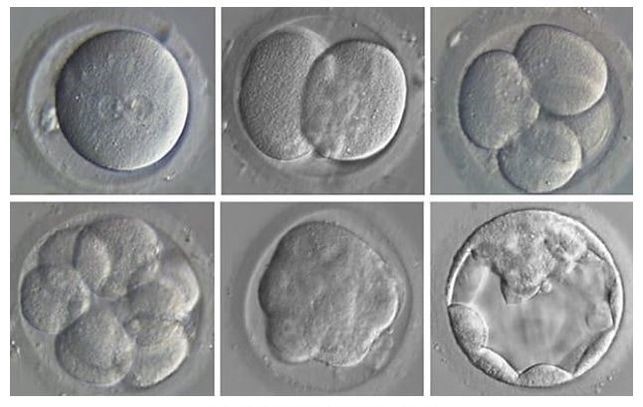In Vitro Fertilization and
Restorative Reproductive Medicine
In Vitro Fertilization and restorative reproductive medicine
The following information is taken from our Information Sheet “In Vitro Fertilization and the Fertility Industry“. See that document for references. We also have a 5 minute video which is a narrated PowerPoint presentation about how IVF works: In Vitro Fertilization – How Many Die?. NaPro Technology is an effective alternative for infertile couples.
In vitro fertilization (IVF) is the joining of a woman’s egg and a man’s sperm in a laboratory dish. In vitro means “in glass” or “outside the body.” One or more embryos that result may then be inserted in a woman’s uterus in order to implant and continue developing. Another term used is assisted reproductive technology (ART). The basic process is to stimulate the woman’s ovaries to produce several eggs at one time, rather than the usual one. The eggs are removed from her body in a minor surgery. The sperm donor usually produces sperm through masturbation. The couple seeking to have a child may use any combination of their own or donated eggs and sperm. Several eggs and sperm are incubated together to allow fertilization to take place.
Five days after egg collection and fertilization, the “best” embryos are selected and one or two (or possibly more) are injected into the woman’s uterus. Many additional embryos are never implanted; they are either discarded, made available for research or experimentation, or frozen for possible future use.
The fertility industry is a multi-billion dollar global industry, with 1.5 million assisted reproductive cycles being performed worldwide, resulting in 350,000 births.

While we have compassion for infertile couples seeking to have a baby, there are serious moral problems. The technique includes manipulating the mother’s body with powerful hormones to produce several eggs at once, rather than the usual one. Many eggs are fertilized, but many will die during the 3 – 5 day observation period. Those who appear healthiest will be transferred to the mother’s uterus. Any remaining embryos not used for transfer are frozen for possible later use. Of those who are transferred to the uterus, only about 31% survive. In the past, when 4 or 6 embryos were transferred and they all successfully implanted, the doctors will very often advise selective abortion of some of the embryos in order to increase the chances of survival of the remaining two. Now it is more common to only transfer 2 or 3 to the uterus. The survival rates for thawing of frozen embryos ranges from 50-80% (5) although one lab now reports a 90% survival rate.
In vitro fertilization basically treats “extra” embryos as disposable by-products of one wanted child. But God is the creator of every child, and every child is equally valuable and deserving of nuturing. Embryos created by IVF are subjected to adverse conditions that put their very survival at risk. At present, hundreds of thousands of embryos are in frozen storage. Some are donated to research, where they will die. Only a small percent is available for adoption.
Another moral problem with IVF is that it separates the creation of new life from the physical expression of love between the parents. Children are treated as a product to be manufactured, a right to be demanded, rather than a gift from God.


An alternative to IVF, with a greater chance of success,
is NaProTechnology. See the links to the right and our list of information resources for more information.
Please share this information with your church community!
